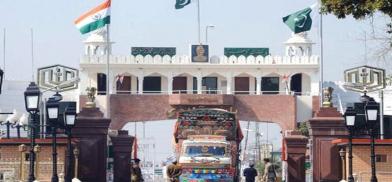Dark clouds over India-Pakistan trade: Will politics continue to mar prospects?
The upshot is that there is only one direction that bilateral trade between India and Pakistan can now go due to politics. This entails a huge loss in potential opportunities, writes N Chandra Mohan for South Asia Monitor

Political tensions continue to cast a long and troubling shadow over cooperation between India and Pakistan. From India’s point of view, the neighbour’s sponsorship of cross-border terrorism stands in the way of an entente cordiale.
Pakistan considers the restoration of the pre-August 5, 2019 status of Jammu and Kashmir as the core issue bedeviling bilateral relations. Despite these hardy perennials, the good news of late is the reaffirmation of the ceasefire of 2003 alongside the Line of Control.
Building on a peaceful border to normalise trade relations, however, appears to be a bridge too far with Pakistan swiftly backtracking on a decision to import sugar and cotton from India.
Bilateral trade volumes in any case have been abysmally low due to political frictions. It also reflects the discriminatory trade regime long favoured by Pakistan that permitted the import of only a limited number of items from India.
Informal trade
Two-way trade volumes dwindled to USD 243 million in 2020-21 (April-January) while India’s bilateral trade with Bangladesh is 32-times larger at USD 7.7 billion. These numbers reflect India’s decision to slap a 200 percent tariff and revoking Pakistan’s most favoured nation status after the2019 Pulwama terror attack.
Pakistan followed suit with suspending bilateral trade in August 2019 after the constitutional changes in the status of Jammu and Kashmir.
To be sure, there were some partial relaxations in September 2019 to import certain pharma products and also in May 2020 when Pakistan lifted the ban on the import of essential medicines to combat COVID-19. The ongoing official suspension of bilateral trade, however, does not imply that no trade whatsoever was taking place between India and Pakistan.
There are longstanding informal trade flows as goods from India are routed through Singapore or Dubai and then onto Iran or Afghanistan before landing up in Pakistan’s ports. There is also informal trade across the border. Official two-way trade thus maybe just a trickle while informal trade volumes are several multiples larger.
Pakistan’s U-turn on imports
Against this backdrop, Pakistan’s U-turn on importing sugar and cotton from India represent a serious setback to any prospect of bilateral trade relations bottoming out.
This is a setback to any prospect of seriously reviving the South Asian Association for Regional Cooperation (SAARC) as a forum for regional integration, especially to tackle the viral pandemic which is showing signs of fresh resurgence.
Due to the P-factor, this grouping has receded from the priorities of India’s Prime Minister Narendra Modi in favour of the Bay of Bengal Initiative for Multi-Sectoral Technical and Economic Cooperation (BIMSTEC). The BIMSTEC’s allure is that it includes much of the neighbourhood minus Pakistan.
Its Pakistan’s loss
Ultimately, the loser is the Pakistani citizen. Instead of securing cheaper and reliable supplies from India, the Trading Corporation of Pakistan is now floating the third tender for 50,000 tonnes of white sugar. It had earlier junked the earlier tenders as the cost of import was high.
The lowest bid it received was USD 540 per tonne from a party in Dubai. In sharp contrast, the opportunity of sourcing from India was spurned by Pakistan’s cabinet although it is available at USD 398 per tonne, inclusive of freight charges and delivery at the godown, according to PTI. Thus while a Pakistani is forking out as much as PKR 100 per kg of sugar domestically, India offered the prospect of supplying it at PKR 61 a kg.
Similarly, for cotton too, the loser is Pakistan’s textile industry as exports have risen but last year’s cotton crop was not good. While the big mills have the option of sourcing from Egypt and other countries, the small and medium firms are disproportionately impacted by scarce and costlier cotton supplies whose price had risen to 11-year highs of PKR 11,700 per maund or PKR 313 per kg. Although there was pressure from the domestic textile industry for supplies from India to resume, politics played the spoiler.
Cotton is one of India’s largest exports to Pakistan, touching USD 550 million in 2018-19 but has dropped to zero in 2020-21 thanks to the suspension of bilateral trade.
Negative prospects
The upshot is that there is only one direction that bilateral trade between India and Pakistan can now go due to politics. This entails a huge loss in potential opportunities, contrary to economic theory which states that neighbouring countries often tend to trade more with each other. Economists use gravity models, potential trade approaches, and other techniques to estimate trade possibilities.
According to gravity models, the flow of trade between a pair of countries is proportional to their economic mass and inversely proportional to the distance between them. Bilateral trade is positively a function of national income and negatively the function of distance.
The India-Pakistan trade thus has been pegged at a whopping USD 37 billion, according to the World Bank and the Delhi-based think-tank ICRIER (Indian Council for Research on International Economic Relations). Unfortunately, the political economy suggests a more dismal prospect.
(The writer is an economics and business commentator based in New Delhi. His views are personal. He can be contacted on nchandramohan@rediffmail.com)














Post a Comment